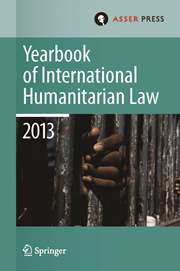Article contents
The conflict in Western Sahara – an unresolved issue from the decolonization period1
Published online by Cambridge University Press: 17 February 2009
Extract
The territory of Western Sahara has an area of about 280,000 sq. km and approximately 250,000 inhabitants, known as Sahrawis. It is situated in the north-west of the African continent, where the Sahara Desert meets the Atlantic Ocean, and has a coastline of more than 1,000 km. In the north, Western Sahara has a common border of 443 km with Morocco, and in the south and west it is bordered by Mauritania (1,561 km). The territory also has a short common border of 42 km with Algeria. The climate is predominantly that of the desert: hot and dry in summer, cold in winter, with little or no rainfall. In the coastal regions vegetation may be abundant. While the Sahrawis were originally nomads, most of the population now lives in small towns and villages. The economy is based on agriculture and fishing, primarily destined for local consumption. Rich phosphate deposits are the main export commodity. There seem to be oil deposits off the Atlantic coast.
- Type
- Current Developments
- Information
- Copyright
- Copyright © T.M.C. Asser Instituut and the Authors 2002
References
3. UNGA Res. 3292 (XXIX), 13 December 1974.
4. Western Sahara, Advisory Opinion of 16 10 1975, ICJ Rep. 1975Google Scholar.
5. Declaration of Principles on Western Sahara by Spain, Morocco and Mauritania, Madrid, 14 November 1975 (‘Madrid Accords’), <http://www.wsahara.net/maccords.html>.
6. A/RES/35/19, 11 November 1980: Question of Western Sahara.
7. UN Doc. S/21360, 20 June 1990.
8. SC Res. 690 (1991). See the MINURSO website: <http://www.un.org/Depts/dpko/missions/minurso/index.html>.
9. The latest pertinent documents are: Report of the Secretary-General on the situation concerning Western Sahara, UN Doc. S/2003/565, 23 May 2003, and SC Res. 1495 (2003), 31 July 2003. See also the list of all Security Council resolutions at the MINURSO website, ibid., James A. Baker III, the former US Secretary of State, is the present Personal Envoy of the Secretary-General.
10. Figures according to estimates by the Algerian authorities (source: UNHCR).
11. The ‘Sahrawi Red Crescent’ does not fulfil the conditions for membership in the International Red Cross and Red Crescent Movement, as there is no sovereign state behind it.
12. ICRC Communication to the press 03/62, 1 September 2003.
13. SC Res. 1495 (2003), 31 July 2003, contains the most recent appeal.
- 2
- Cited by


